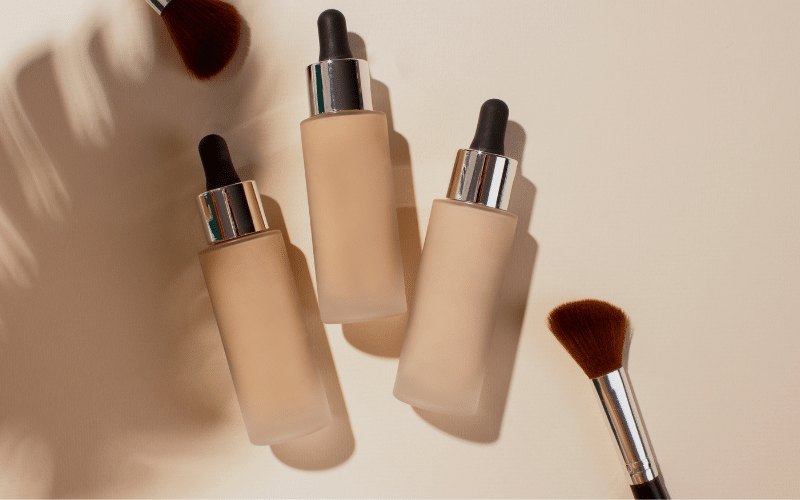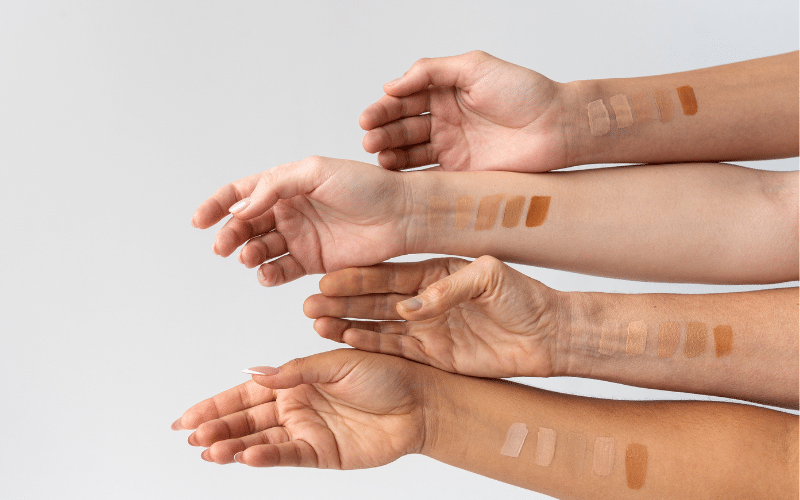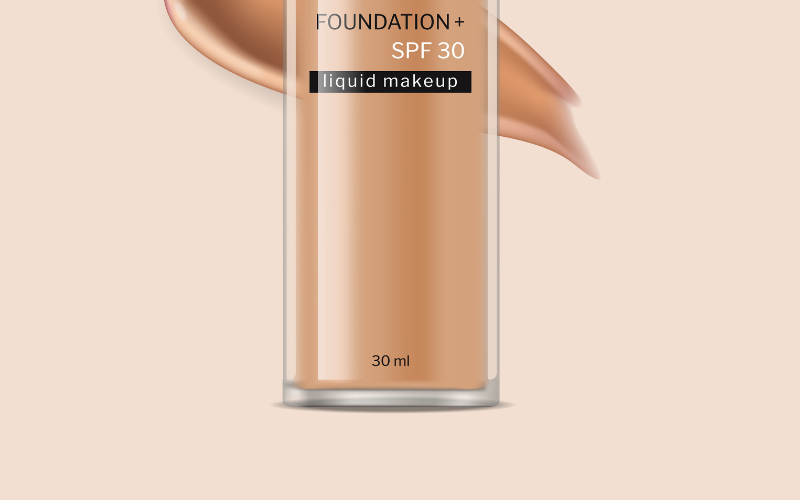
Selecting the perfect foundation is more than just matching your skin tone; it’s about understanding your skin’s unique needs and characteristics. The first step involves determining your skin type oily, dry, combination, or sensitive as this shows the kind of formula that will best suit you. Next, identifying your skin’s undertone, whether warm, cool, or neutral is crucial for a natural, seamless match.
Testing foundation shades in natural light ensures accuracy in colour matching while considering the desired level of coverage helps achieve your preferred aesthetic. Additionally, for those frequently outdoors, opting for a foundation with SPF content provides essential sun protection integrating skincare into your makeup routine.
Here Are Some Selected Types of Foundations
1. Determine Your Skin Type
 Determining your skin type is a fundamental step in selecting the ideal foundation. Each skin type has unique needs, which should be reflected in your choice of foundation formula. For oily skin, a mattifying foundation helps control excess shine and provides a smoother finish. Dry skin benefits from hydrating foundations that offer a dewy finish, preventing the makeup from settling into fine lines and flaking.
Determining your skin type is a fundamental step in selecting the ideal foundation. Each skin type has unique needs, which should be reflected in your choice of foundation formula. For oily skin, a mattifying foundation helps control excess shine and provides a smoother finish. Dry skin benefits from hydrating foundations that offer a dewy finish, preventing the makeup from settling into fine lines and flaking.
Combination skin requires a balance, often achieved with a foundation that offers hydration while controlling shine in oilier areas. For sensitive skin, hypoallergenic and non-irritating formulations are crucial to avoid any adverse reactions. Understanding your skin type ensures that the foundation you choose enhances your skin’s natural qualities while addressing specific concerns.
2. Identify Your Undertone
 Identifying your skin’s undertone is key to finding a foundation that truly matches and complements your natural complexion. Skin undertones fall into three categories: warm, cool, or neutral. Warm undertones are characterized by a yellow, peachy, or golden hue, while cool undertones have hints of pink, red, or blue. Neutral undertones offer a mix of these colors or a balanced beige shade.
Identifying your skin’s undertone is key to finding a foundation that truly matches and complements your natural complexion. Skin undertones fall into three categories: warm, cool, or neutral. Warm undertones are characterized by a yellow, peachy, or golden hue, while cool undertones have hints of pink, red, or blue. Neutral undertones offer a mix of these colors or a balanced beige shade.
Knowing your undertone helps in selecting a foundation shade that seamlessly blends with your skin, creating a more natural and cohesive look. A mismatch in the undertone can result in the foundation that looks off or unnatural, highlighting the importance of this step in your makeup routine.
3. Test Shades in Natural Light
 Testing foundation shades in natural light is crucial for an accurate color match. Artificial lighting can distort the true color of the foundation, leading to a less than ideal match. For the most reliable result, apply a small amount of the foundation along your jawline, not the back of your hand.
Testing foundation shades in natural light is crucial for an accurate color match. Artificial lighting can distort the true color of the foundation, leading to a less than ideal match. For the most reliable result, apply a small amount of the foundation along your jawline, not the back of your hand.
The skin on your hand often differs in color and texture from your face, potentially misleading your shade selection. By testing on your jawline, you ensure the foundation blends seamlessly with both your face and neck, avoiding a noticeable line of demarcation. This method helps in finding a shade that appears natural and consistent in various lighting conditions.
4. Consider Coverage Needs
 Considering your coverage needs is essential when selecting a foundation. The level of coverage you choose should align with your skin concerns and the desired final look. Light coverage foundations are ideal for those who prefer a natural look and have fewer blemishes or imperfections to conceal. They offer a sheer finish, allowing your skin’s natural texture to show through.
Considering your coverage needs is essential when selecting a foundation. The level of coverage you choose should align with your skin concerns and the desired final look. Light coverage foundations are ideal for those who prefer a natural look and have fewer blemishes or imperfections to conceal. They offer a sheer finish, allowing your skin’s natural texture to show through.
Medium coverage foundations provide a balance, covering minor imperfections while still maintaining a somewhat natural appearance. Full coverage foundations are best for concealing significant blemishes, discoloration, or scarring, offering a more uniform and flawless finish. Assessing your skin’s needs and your aesthetic goals will guide you to the appropriate level of coverage.
5. SPF Content
 Choosing a foundation with SPF content is a wise decision, especially if you spend considerable time outdoors. Sun protection is crucial for skin health, as prolonged exposure to UV rays can lead to premature ageing, hyperpigmentation, and an increased risk of skin cancer. A foundation containing SPF adds an extra layer of defence against these harmful rays.
Choosing a foundation with SPF content is a wise decision, especially if you spend considerable time outdoors. Sun protection is crucial for skin health, as prolonged exposure to UV rays can lead to premature ageing, hyperpigmentation, and an increased risk of skin cancer. A foundation containing SPF adds an extra layer of defence against these harmful rays.
It simplifies your skincare routine by combining sun protection with makeup application, ensuring you’re consistently protected. While it should not replace a standalone sunscreen, especially for extended outdoor activities, a foundation with SPF can provide additional sun safety, keeping your skin healthier and more radiant.
Conclusion
The journey to finding your ideal foundation encompasses a thorough understanding of your skin’s type, undertone, and specific needs. By carefully considering these factors, along with the setting in which the foundation is tested, and the level of coverage required, you can select a product that not only matches your skin tone perfectly but also enhances your overall complexion.
Adding SPF into the mix further protects and cares for your skin, making your foundation choice an integral part of your skincare regimen. Ultimately, the right foundation serves as the cornerstone of any makeup routine, setting the stage for a flawless, radiant look that resonates with your personal style and skin health.



